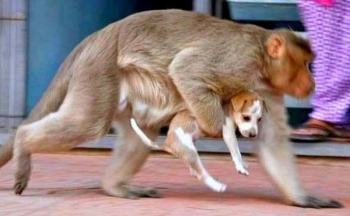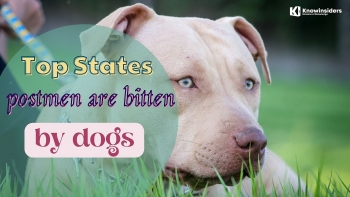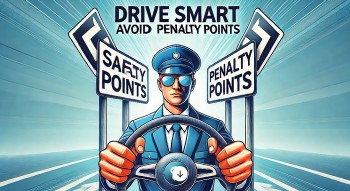Why and When Do Dogs Eat Grass? The Truth Behind This Strange Habit
You’ve seen it: a healthy, happy dog with a full bowl of food suddenly starts chewing on the lawn like it’s gourmet greens. It may seem odd or even alarming, but dogs eating grass is one of the most common—and misunderstood—canine behaviors. Some dogs eat grass and vomit. Others graze regularly without issue. Is it instinct? Nutrient craving? Illness? In this deep-dive, we explore the real reasons dogs eat grass, when it matters, and how you should respond as a pet parent.
Learn more: Do Dogs Have Souls? How to Communicate with Beloved Pets
 |
| Why and When Do Dogs Eat Grass? The Truth Behind This Strange Habit—Explained by Science and Instinct |
Is It Normal for Dogs to Eat Grass?
Yes—grass eating is both common and typically harmless. Multiple studies and veterinary surveys have found that up to 80% of dogs engage in grass eating from time to time. While not all dogs do it, and not all owners witness it, it's far from unusual. Most dogs who eat grass are not sick, and most grass eaters never vomit afterward.
Why Do Dogs Eat Grass?
Let’s break it down into the leading motivations behind this behavior.
1. To Induce Vomiting (Sometimes)
A widely held belief is that dogs eat grass to make themselves throw up when they’re feeling unwell. Grass blades may irritate the stomach lining or tickle the throat, leading to vomiting. But here’s the twist: only about 10–25% of dogs actually vomit after eating grass, and many show no signs of illness beforehand. So while some dogs may self-medicate this way, it's not the main reason for grass munching.
2. To Fill a Nutritional Gap
Some veterinarians suggest dogs eat grass to compensate for dietary deficiencies, particularly fiber. Dogs with low-fiber diets may instinctively seek out plant matter. Grass contains insoluble fiber, chlorophyll, and other micronutrients that can aid digestion. This may be especially true for dogs on low-quality kibble or heavily processed diets.
3. Ancestral Instincts
In the wild, canids like wolves consume entire prey animals, including their herbivorous digestive contents. Wild dogs are known to consume berries, roots, and grass-like plants. This evolutionary echo may drive some dogs to graze, mimicking the behaviors of their ancient ancestors.
4. Boredom or Behavioral Enrichment
For many dogs, eating grass may be a sensory outlet. A bored or under-stimulated dog might chew grass simply because it's something to do. This is especially common in dogs left alone in the yard, without toys, mental challenges, or companionship.
5. It Tastes Good
Believe it or not, dogs may enjoy the flavor and texture of certain grasses, especially in the spring when blades are fresh and soft. Some dogs are selective, preferring one patch of grass over another, hinting at taste or texture preferences.
Learn more: Why Do Dogs Wag Their Tails and What Do They Want to Say?
When Do Dogs Eat Grass?
Timing can offer clues into your dog’s motivation.
1. Early Morning Grazing
Some dogs eat grass first thing in the morning—potentially linked to empty stomach acid or morning queasiness. It may help settle their digestive tract or simply provide an outlet before breakfast.
2. Post-Meal Behavior
Some dogs eat grass after meals, which could be a signal of over-fullness, digestive regulation, or simply a routine.
3. During Periods of Stress or Anxiety
Changes in household routines, loud noises, or separation anxiety may trigger stress behaviors, including compulsive grass chewing. In such cases, it can be part of a broader picture of stress coping mechanisms.
4. In Spring and Summer
Grass eating is more common during warmer months when lawns are lush. Fresh grass contains more moisture and sugar, making it more appealing.
Is Grass Dangerous for Dogs?
Grass itself isn’t toxic, but there are serious concerns depending on context:
1. Pesticides and Fertilizers
Chemically treated lawns can be harmful—even lethal—if ingested. Always be aware of your landscaping practices and avoid recently treated areas.
2. Intestinal Parasites
Eating grass can expose dogs to roundworm, hookworm, or other parasites, especially if the area is frequented by other animals. Routine deworming is essential.
3. Obstruction Risk
Long grass blades may cause mild choking or digestive blockages if eaten in large quantities, though this is rare.
When Should You Worry?
While occasional grazing is normal, persistent or compulsive grass eating, especially with other symptoms, may indicate a deeper issue:
-
Frequent vomiting after grass consumption
-
Diarrhea or constipation
-
Lethargy or appetite loss
-
Drooling or abdominal bloating
These signs warrant a vet check-up to rule out GI disease, pancreatitis, or other metabolic concerns.
How to Manage and Prevent Problematic Grass Eating
1. Evaluate Their Diet
Ensure your dog’s food meets nutritional requirements, particularly for fiber. Consider switching to high-quality or vet-recommended brands.
2. Offer Safe Alternatives
Introduce dog-safe greens like wheatgrass, kale, spinach, or herbs like parsley into their diet. You can even grow a mini dog garden indoors.
3. Enrich Their Environment
Dogs need mental and physical stimulation. Daily walks, interactive toys, scent games, and training help curb boredom-driven behaviors.
4. Monitor Grass Access
If your dog insists on eating grass, make sure it's from safe, untreated areas. Avoid public parks where chemical treatment is common.
5. Try Digestive Supplements
Some owners report success with probiotics or digestive enzymes, especially for dogs with sensitive stomachs. Always consult your vet first.
Do Certain Breeds Eat Grass More Than Others?
There’s no definitive breed link, but anecdotal evidence suggests retrievers, collies, and working breeds—dogs known for their activity and curiosity—may graze more often. These breeds also tend to develop habitual behaviors when not adequately exercised.
Puppy vs. Adult Grass Eating
-
Puppies: Often chew grass out of curiosity and exploration.
-
Adults: More likely to eat grass due to habit, digestive needs, or boredom.
Both should be supervised and taught boundaries to avoid overgrazing or ingesting dangerous items.
Can Dogs Digest Grass?
Dogs lack the enzymes to fully digest cellulose, the fibrous component of grass. As a result, you may see undigested blades in their stool, or minor vomiting. This isn’t dangerous unless it becomes frequent.
Myths About Grass Eating
“Eating Grass Means My Dog Is Sick”
False—most dogs who eat grass are perfectly healthy. It becomes concerning only when paired with other symptoms.
“Dogs Eat Grass to Clean Out Their System”
Partially true. Some dogs may use grass to prompt vomiting or bowel movements, but not all do it for this reason.
“Grass Eating Means My Dog Is Underfed”
Also false. Many well-fed dogs still graze due to curiosity, instinct, or behavioral triggers.
FAQs
Is it safe for dogs to eat grass?
Generally yes, if the grass is free of chemicals and pesticides. Always supervise and limit access if you're unsure.
Why does my dog eat grass and then throw up?
Some dogs use grass to self-induce vomiting when feeling nauseous. Occasional vomiting isn’t a problem, but frequent episodes should be evaluated by a vet.
Can grass eating be a sign of anxiety?
Yes. In some cases, dogs with separation anxiety or stress chew grass as a repetitive coping behavior.
How can I stop my dog from eating grass?
Increase stimulation, provide dietary fiber, and restrict access to chemical-treated lawns. Redirect behavior using toys and training.
Can I give my dog leafy greens instead of grass?
Yes. Safe options include small amounts of spinach, kale, lettuce, and wheatgrass. Introduce slowly and check for allergies.
Conclusion
Dogs eat grass for reasons as complex as their personalities—ranging from natural instinct and taste preference to nutritional needs and emotional expression. While it’s usually harmless, understanding the why and when behind your dog’s behavior helps you care for them better. Be observant, proactive, and thoughtful—and if your dog finds joy in grazing, let it be a safe and healthy experience.
 What was 'Real Name' of 6 Dogs and Why did he die? What was 'Real Name' of 6 Dogs and Why did he die? Atlanta rapper 6 Dogs reportedly died by suicide on Tuesday (January 26) at just 21 years old. Who was rapper 6 Dogs, What was 6 ... |
 Monkeys Captured In India in 'Revenge Killing' of 250 Dogs Monkeys Captured In India in 'Revenge Killing' of 250 Dogs In a bizarre incident, monkeys in Maharashtra’s Beed district (India) have killed around 250 dogs over the last one month. |
 Top 10 States Where Many Postmen Are Bitten By Dogs In America Top 10 States Where Many Postmen Are Bitten By Dogs In America Dog attacks pose a serious threat to postal employees and the public. Here are the top states for postal carrier dog bites that everyone should ... |
 Top 10 Best Descriptive Essays on Dogs for Children Top 10 Best Descriptive Essays on Dogs for Children Elementary school students often have difficulty describing dogs. Let Knowinsiders.com imagine their lovely dogs in some of the best dog descriptions below. |























